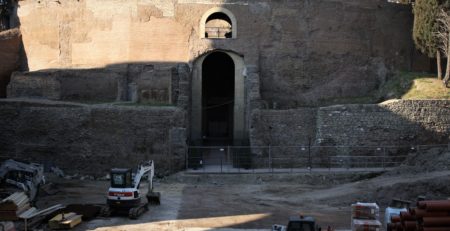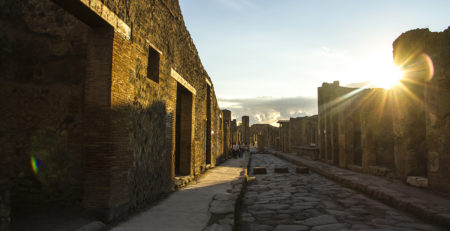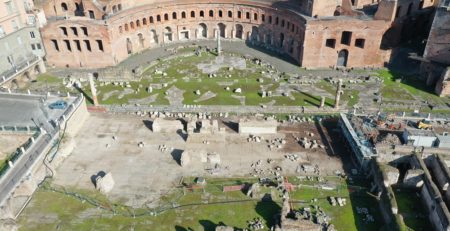Restoring Rome
The historic center of Rome continues to unveil itself thanks to a series of valorization projects funded privately and publicly.
The winner for the design and construction of the new arena floor of the Flavian Amphitheater – better known as the Colosseum – has been announced! Milan Ingegneria has accepted the assignment after winning first place with their sleek and mobile floor plan. Milan Ingegneria is a specialized company that has numerous projects around the world and collaborations with great names in architecture, from Renzo Piano to Mario Cucinella, and Rem Koolhas to Arata Isozaki.
The new arena, the designers attest, will be set at the same level as the pre-existing Flavian floor. Beams will be placed on the wall structures without mechanical anchors to support a series of high-tech mobile panels in carbon fiber covered with Accoya wood. The movement of the panels will allow the opening of the underground structures, guaranteeing ventilation and lighting. The entire arena floor will become usable, opening up a whole new experience for visitors. Finally, the floor will also be sustainable, as required by the guidelines proposed by the Colosseum Park.
The new arena could see the light of day by 2022 although no date has been set yet for construction. Whereas work will start by mid-May 2021 to make the Sacred Area of Largo Argentina, one of the most important and ancient archaeological complexes in Rome, to be made accessible and open to visitors for the first time since its discovery in the 1920s.
Nowadays, Largo Argentina hosts the Cat Sanctuary, where tourists coo and awe at the local feline colony. Yet few know that this is the site of Julius Caesar’s assassination. While the city of Rome assures that the felines will not be disturbed, the future restorations are exciting.

The intervention is made possible due to the donation of the Bulgari maison of about one million euros, which will allow a museum to be opened as well as the site to be managed. Bulgari’s interest in protecting and enhancing the public good is nothing new. A short few years ago they funded the cleaning of the Spanish Steps.
The restoration of the Temple of Venus in Rome by Fendi, which cost the company 2.5 million euros, is starting right now and the progress can be watched live stream weekly. Fendi, who like Bulgari, had just finished funding the cleaning of the Trevi fountain, addresses the remains of what was once known as ancient Rome’s largest temple. Tempio di Venere e Roma was dedicated to the goddesses Venus Felix (Venus the Bringer of Good Fortune) and Roma Aeterna (Eternal Rome). Construction of the temple began in 121 AD under Emperor Hadrian and it was completed in 141.

This model of collaboration between public and private is not an isolated case: as Rome is burdened by the cost of its vast cultural heritage and past debts, new trends like this are sure to be seen to keep the city sustainable.
Photo of the Temple of Venus – By СССР – Own work, CC BY-SA 2.5 ca, https://commons.wikimedia.org/w/index.php?curid=80857368
Panorama of the Largo Argentina – By Adrian Farwell, CC BY 3.0, https://commons.wikimedia.org/w/index.php?curid=45251171
Photo of the Cat – By Sonse – Largo di Torre Argentina, CC BY 2.0, https://commons.wikimedia.org/w/index.php?curid=76177337











